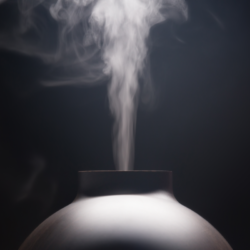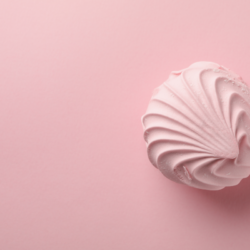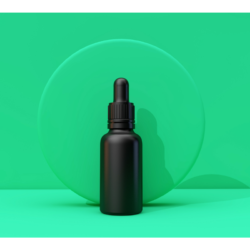Winter’s already here and we’re all starting to dread all the little worries it can bring: colds, runny noses, coughs, sore throats… We all know them by heart! Fortunately,aromatherapy (the use of essential oils) is here to relieve us of all these little everyday ailments.
The European Pharmacopoeia defines an essential oil as “an odorous product, generally complex in composition, obtained from a botanically defined plant raw material, either by steam distillation, dry distillation or by a suitable mechanical process without heating”. This process releases the captured volatile compounds to obtain a concentrated liquid extract. Essential oils can be used in pharmacies to provide personalised medical advice and an interdisciplinary approach to care.
In this article, we take a look at the three essential oils you need to get through the winter and put together an aromatic kit to take with you wherever you go.
Tea tree(Melaleuca Alternifolia) essential oil to face the winter
Also known as tea tree oil, this is one of winter’s best-sellers. In fact, this essential oil has been used for over a century since its discovery in Australia, thanks to its powerful anti-infectious and antibacterial properties.
Tea tree essential oil will be useful for all your ailments: bacterial, viral, skin, parasitic and even mycotic infections. In winter, it will be particularly valuable for ENT and respiratory infections and flu-like conditions in the whole family. It is used topically (e.g. on a handkerchief to breathe in). A little extra: tea-tree essential oil doesn’t just treat, it prevents by boosting your immune system. So it’s right up there with the top essential oils for winter.
What is tea tree?
Tea tree, or Melaleuca alternifolia, is a small shrub in the Myrtaceae family. Botanically, the tea tree is characterised by its curved branches and feathery foliage. Its linear, lanceolate leaves are tough. Tea tree leaves have numerous oil glands, giving off a powerful aromatic scent when crumpled. The tree’s white flowers emit an abundant fragrance and are characterised by a profusion of stamens (white variegated spikes).
Although tea tree essential oil is often found in the wild on marshy plains, it is mainly extracted from crops.
What are its indications?
Tea Tree essential oil is widely used in aromatherapy for its many beneficial properties.
This essential oil works mainly thanks to its biochemical composition. It contains monoterpenes, monoterpenols, oxides and other biochemical constituents. Terpinen-4-ol, one of its main components, has powerful anti-infectious properties. It disrupts bacterial cell membranes, causing intracellular material to leak out. It then inhibits cell respiration. Monoterpenols have broad-spectrum antiviral, antifungal and anti-infectious properties.
Tea Tree essential oil is considered “eubiotic“. This means that it kills bad bacteria without destroying the commensal flora. It also acts synergistically with antibiotics.
In terms of indications, this essential oil has many properties, including :
- Broad-spectrum antibacterial: It effectively fights a range of bacteria, including Escherichia coli, Staphylococcus aureus and Cutibacterium acnes.
- Anti-parasitic and anti-fungal: It is effective against fungi of the Candida and Malassezia types responsible for mycosis.
- Antiviral: It can act against Herpes simplex viruses.
- Immune stimulant: It promotes the body’s immune response.
- Physical, cardiac and mental tonic: Stimulates physical and mental vitality.
- Skin protector: It can be used to prevent radiodermatitis during radiotherapy sessions.
In terms of energy, Tea Tree essential oil has stimulating, neurotonic and rebalancing properties. It stimulates vital energy. This essential oil promotes mental clarity. It helps to rebalance physical and mental energies.
What dosage should I choose and what precautions should I take?
Certain precautions and contraindications must be observed when using Tea Tree.
The most common dose is applied to the skin. Here are a few examples:
- to treat pimples, sores, fungal infections of the skin, vagina, nails or any other skin infection, you can apply Tea Tree essential oil directly to the area concerned using a cotton bud. If the area is larger than a pimple, a 20% dilution in a vegetable oil is recommended.
- to prevent skin burns caused by radiotherapy, you can apply a drop of Tea Tree essential oil mixed with a drop of Niaouli essential oil directly to the area to be radiated. Use this mixture one to two hours before and after the session.
However, it is essential to take certain important precautions. It is essential to follow the recommended doses to avoid any potential health risks. People with epilepsy should consult a health professional before using Tea Tree essential oil. High doses may present an epileptogenic risk.
The use of this product in children under the age of 12 has not been established. It must not be ingested, inhaled or come into contact with the eyes or ears. If symptoms worsen during use, medical advice should be sought. Avoid applying it to burns. In the event of fever or worsening signs of skin infection, medical advice should be sought.
Eucalyptusradiata essential oil to get you through winter
Eucalyptus radiata is the essential oil par excellence for respiratory ailments, as it combines antiviral, decongestant and expectorant properties. Hence its use for a wide range of conditions, including colds, bronchitis, sinusitis, ear infections and flu.
Its very mild composition means it is perfectly tolerated.Eucalyptus radiata essential oil is particularly effective when applied locally (preferably mixed with a vegetable oil), massaged into the chest, along the spine or under the arch of the foot. The added bonus of the second oil in this top list of essential oils for winter: during epidemics, diffusing it will have an effective preventive effect by purifying the air.
What is Eucalyptus radiata?
Radiant Eucalyptus, also known by its botanical name Eucalyptus radiata, belongs to the Myrtaceae family. This Australian tree can reach an impressive height of 50 metres. Its average height is around 30 metres. It is found mainly on the plateaux of New South Wales and in the coastal areas of Victoria in Australia.
The Radiant Eucalyptus is characterised by its grey or grey-brown fibrous bark. It grows in long strips, with small green branches. Its narrow leaves are green. They are 7 to 15 cm long and 0.7 to 1.5 cm wide. When kneaded, they give off a pleasant peppermint scent. This is why it is known as “peppermint” eucalyptus.
Eucalyptus Radié is particularly appreciated in pharmacies for the properties of its essential oils. Its medicinal use has been recognised since the early 20th century. Despite its smaller size compared with other eucalyptus species, it remains a shrub of great importance for its medicinal applications and benefits.
What are its indications?
The essential oil of Eucalyptus Radiata, or Eucalyptus radiata A.Cunn. ex DC. is extracted mainly from the plant’s leaves, and stands out for its therapeutic properties in the treatment of respiratory ailments. It is used to soothe various winter ailments and boost the immune system during epidemics.
The chemical composition of this essential oil is diverse, comprising monoterpenes (around 8%), monoterpenols (around 20%), terpene esters (around 3%) and terpene oxides (between 62 and 74%). These components give it a wide range of properties.
Ravintsara essential oil’s mode of action is mainly due toeucalyptol or 1,8-cineole, which stimulates the respiratory mucosa, facilitates the expulsion of secretions and has bronchodilator effects by relaxing the smooth muscles of the airways. In addition,alpha-terpineol andeucalyptol have an antiviral action by inhibiting viral replication.
Eucalyptus Radiata essential oil has numerous therapeutic indications, notably as an airborne antiseptic, expectorant, respiratory decongestant, immune stimulant and antibacterial. It is also used in paediatrics and as an insect repellent.
In cosmetics, Eucalyptus Radiata is used for combination and oily skin, as well as in hair care. In energetic terms, Eucalyptus Radiata is considered to be energising, relaxing, intellectually stimulating and internally soothing. It helps to reduce stress and mental fatigue.
What dosage should I choose and what precautions should I take?
For respiratory and ENT conditions such as colds and bronchitis, skin application is recommended. You can apply it locally, pure or slightly diluted in a vegetable oil, to the infected areas. Some examples of use:
- contagious viral epidemics: we recommend a cutaneous application, pure or slightly diluted, on the chest, back or soles of the feet.
- ear infections: you can apply pure or slightly diluted (children) ointments around the ear, three times a day for 8 to 10 days.
Olfactotherapy is recommended for inflammation of the nasal mucosa, negative emotional states, fatigue and lack of concentration. Various olfactotherapy methods are used for these situations.
However, it is essential to observe the precautions for using Eucalyptus Radié essential oil. Asthmatics and epileptics should not use it without prior medical advice. It is also not recommended for use by pregnant women under 3 months of age or by infants under 3 months of age. Eucalyptus Radié essential oil is generally well tolerated, but there are some contraindications. For children under the age of 2, its application to certain areas of the skin is prohibited. In addition, people suffering from gastrointestinal or biliary inflammatory disorders should avoid using it.
Ravintsara essential oil(Cinnamomum camphora cineoliferum) for a peaceful winter
Here’s the latest winter essential: Ravintsara essential oil. Powerfully antiviral and anti-infectious, it also draws its strength from its highly immunostimulant properties . Few infections can resist it, as it easily prevents and treats all viral, respiratory and digestive ailments.
What is Ravintsara?
Cinnamomum camphora, also known by various vernacular names such as Camphor tree, Shiu wood, Chinese laurel or Ravintsara (in Malagasy), is a species of tree in the laurel family (Lauraceae). Camphor is extracted from this tree by distilling its wood. Hô wood and Ravintsara essential oils are produced according to the chemotype of the tree.
Ravintsara essential oil has a number of beneficial effects on the respiratory system. Firstly, it acts as an expectorant by stimulating the mucin glands and increasing the ciliomotor activity of the bronchial mucosa. It also dries out the respiratory mucosa, improving mucociliary clearance.
Ravintsara is also mucolytic, as it stimulates the exocrine glands of the respiratory mucosa. This promotes respiratory oxygenation, has a secretolytic action and increases the kinetics of mucociliary transport in the sinuses.
Ravintsara essential oil has an anti-inflammatory effect thanks to the 1,8 cineole it contains. In vitro studies have demonstrated its action on white blood cells (monocytes) by reducing inflammatory mediators such as leukotrienes, thromboxanes and prostaglandins. It also reduces TNF-α (tumour necrosis factor), making it an interesting treatment for prolonged inflammatory conditions.
Cinnamomum camphora leaves have an antispasmodic effect on the smooth muscles of the trachea, acting in particular againstacetylcholine.
In terms of its antimicrobial action, Ravintsara essential oil stands out for its anti-infectious and immunostimulant properties. Its efficacy is comparable to that of clotrimazole, making it a useful treatment for bacterial vaginosis. It also works in synergy with antibiotics such as amoxicillin/clavulanic acid and gentamicin against Staphylococcus aureus, a bacterial strain implicated in osteomyelitis.
Other beneficial effects of Ravintsara essential oil include its antiviral action, its role as a neurotonic and stimulant, its muscle-relaxing and analgesic properties, its immunomodulation by increasing βgamma-globulins, its antifungal action and its hypotensive effect.
What dosage should I choose and what precautions should I take?
In various therapeutic contexts, Ravintsara essential oil is used for its beneficial properties. Here are a few examples:
- Sinusitis and nasal catarrh: inhale this oil by adding 5 drops to a bowl of warm water, making sure you close your eyes and avoid going outside for 30 minutes after inhalation.
- Oily cough: apply to the chest and back, diluted between 5 and 20%. It can also be taken orally by mixing it with other mucolytic, anti-inflammatory and anti-infectious essential oils.
- Otitis: peri-auricular unction with a mixture of Ravintsara, Lavender officinalis and Tea tree, diluted 20%, applied six times a day around the ear.
In winter, to boost the immune system, take 2 drops of Ravintsara essential oil in the morning on a suitable carrier.
However, it is important to observe the precautions for using Ravintsara essential oil, in particular by avoiding prolonged use, by advising against its use in certain populations (pregnant women, children, asthmatics, etc.) and by consulting a health professional in case of doubt or potential drug interaction.
Conclusion
Essential oils can be a useful way of boosting immunity and preventing winter illnesses. Using tea tree, eucalyptus and ravintsara essential oils can help prevent respiratory infections and relieve cold and flu symptoms. It is important to follow the instructions for use and take the necessary precautions to use essential oils safely.





